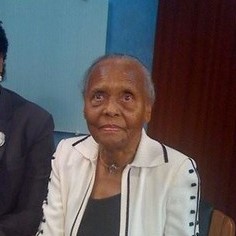Learn about some Black leaders in the fields of voting rights, poetry, math, science and more. These are just a few of many.

Stacey Abrams (1973 – present) is a voting rights activist, lawyer, politician and author. She served in the Georgia House of Representatives from 2007 to 2017. As a voting rights activist, she founded FairFight.com to address voter suppression and her efforts have been widely credited with boosting voter turnout in Georgia for the 2020 presidential election. Abrams’s nonfiction books, Our Time Is Now and Lead from the Outside, were New York Times best sellers. Outside of politics, she has published nine fiction books (eight using the pen name Selena Montgomery).

Linda Brown (1943 – 2018) was a civil rights activist and campaigner for equality in education, best known as the 3rd grade girl at the center of the landmark 1951 United States civil rights case, Brown v. Board of Education. Her lawsuit against segregation in elementary schools was ultimately successful and the resulting Supreme Court precedent overturned the ‘separate but equal’ doctrine which had been previously established in Plessy v. Ferguson. Brown became an educator and civil rights advocate. Learn more about Linda Brown and her legacy on Biography.com.

Maya Angelou (1928 – 2014). In 1970, poet and author Maya Angelou published her book I Know Why the Caged Bird Sings, which received international acclaim, but was also banned in many schools during that time. In 1993, Angelou recited her poem On the Pulse of Morning at the first inauguration of Bill Clinton, making her the first poet to make an inaugural recitation since 1961. Watch and listen to a reading of Maya Angelou’s poem “And Still I Rise” set to images, developed by a group of National Park Service staff and interns. Learn more about Maya Angelou at mayaangelou.com and biography.com.

Thurgood Marshall (1908 – 1993) was an American lawyer and civil rights activist who served as Associate Justice of the Supreme Court of the United States from 1967 to 1991. He founded and became the executive director of the NAACP Legal Defense Fund in 1940. Marshall was the Supreme Court’s first African-American justice and as a lawyer he successfully argued several cases before the Supreme Court, including Brown v. Board of Education. Learn more about Thurgood Marshall at thurgoodmarhsall.com, oyez.org and naacpldf.org or watch a mini-biography.

Ruby Bridges (1954 – present) is a civil rights activist and was the first African-American child to desegregate the all-white William Frantz Elementary School in Louisiana during the New Orleans school desegregation crisis in 1960. She is the subject of a 1964 painting, The Problem We All Live With by Norman Rockwell. Watch a PBS Newshour interview with Ruby Bridges about racism in the modern era and her children’s book, Ruby Bridges Goes to School. Learn more about Ruby Bridges at rubybridges.com and womenshistory.org.

Sidney Poitier (1927 – 2022) was a Bahamian-American actor, film director, and diplomat. In 1963, he was the first Black person to win the Academy Award for Best Actor. Listen to a podcast by New York Times culture critic, Wesley Morris, that discusses the “The Life and Legacy of Sydney Poitier“. Sidney Poitier was Hollywood’s first Black matinee idol and helped open the door for Black actors in the film industry. Watch this Time Magazine Memorial Video or read this NYT’s remembrance to learn more about his life and achievements.

Eva Rutland, a Sacramento author and mother, wrote a memoir, When We Were Colored, about being a Black mom raising her kids in Sacramento in the 1950s and 1960s. Her daughter, former Sacramento Bee editorial writer Ginger Rutland, turned the memoir into a play. The play is available to view for free online at https://eva-rutland.com/blog/. The play does have some profanity and uses the n-word in its entirety, so we recommend that parents/guardians watch the play with their students to provide context and engage in a deeper understanding and conversation.

Katherine Johnson (1918- 2020) was a NASA mathematician. In 1957. Johnson, who worked with many of the engineers in the Flight Research Division and joined them in the program that became NASA in 1958. She did trajectory analysis for the May 1961 mission Freedom 7, America’s first human spaceflight. In 1960, she was the first woman in the Flight Research Division to receive credit as an author of a research report. Ms. Johnson was featured in the movie and book Hidden Figures. You can also learn more about her at nasa.gov and kids.nationalgeographic.com or watch this video from National Geographic.
